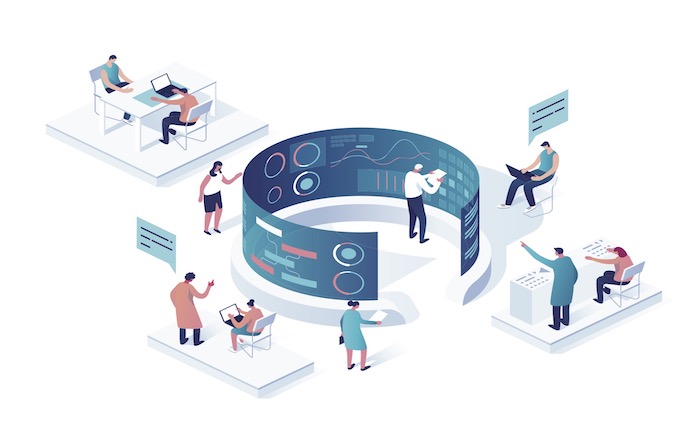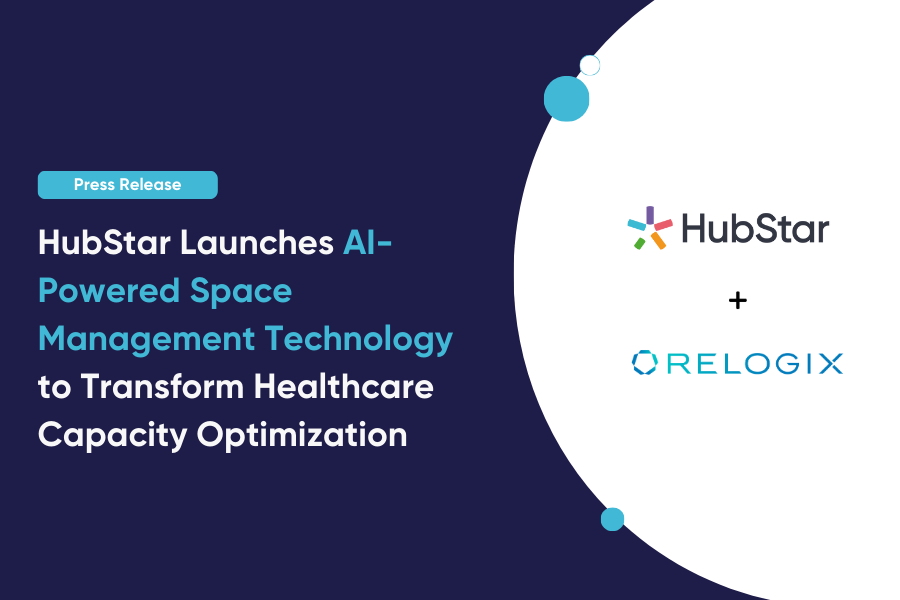Digital Workspaces

Contents
Hybrid and agile workplaces are becoming the norm in the world of work as many companies return to in-person work following COVID-19. Allowing a permanent sense of flexibility was the overwhelming preference for workers in return to work surveys, including one from Smartway2. Hybrid and agile workplaces are a new concept for many companies, and even entire industries, that before the pandemic operated entirely in-person every day. In order to meet the needs of employees who have experienced such a dramatic shift in work modality, technology and smart offices have become more prevalent and more important than ever before. So, what do these changes mean for you and your company? Read on as we break down the ever-increasing importance of digital workspaces and explain why they are something you should implement to remain competitive.
What is a Digital Workspace?
Let’s start with answering the question of what is a digital workspace?
VMware, a cloud computing and virtualization technology company, provides a helpful definition as part of a larger post entitled, “What is a Digital Workspace?”. According to VMware, “A digital workspace is a technology framework that manages and centrally controls the elements of an organization’s IT assets including applications, data, and endpoints. A digital workspace also provides anytime, anywhere, any device access to applications for users, whether those applications reside on-premises or on one or more clouds.”
In its post, VMware goes on to share a few examples of “common features of digital workspaces,” which we are including below:
- Consistent, unified management of all devices whether mobile or desktop
- Single sign-on (SSO) for enhanced security
- Enhanced security when browsing the web and accessing Software as a Service (SaaS) apps
- Virtualization of both applications and user desktop
- Automated workflows
Keeping Up with Change
It is very clear that because of the pandemic, times have changed when it comes to how, when and where people get their job done. Deloitte, the professional services network, authored a report entitled, “The digital workplace: Think, share, do Transform your employee experience,” which illustrates the importance of empowering digital workspaces.
Deloitte’s report reads in part, “To accurately reflect their staff’s changing work experience, leading organizations have begun to implement an entirely new working environment – the digital workplace. By integrating the technologies that employees use (from e-mail, instant messaging and enterprise social media tools to HR applications and virtual meeting tools), the digital workplace breaks down communication barriers, positioning you to transform the employee experience by fostering efficiency, innovation and growth. The key to success, however, lies in the effective implementation of a digital workplace strategy capable of driving true cultural change.”
We found one particular element of Deloitte’s report especially helpful, which is that digital workspaces can help organizations by addressing the following concerns:
- Support changes in working styles that enable employees to work more transparently and better leverage social networks.
- Unify offline and online communications by keeping employees connected through their mobile devices to provide anywhere, anytime access to tools and corporate information.
- Focus on employee experience by providing them with user experience they have outside the firewall.
- Provide choice, flexibility and personalization.
- Support virtual work environments that allow employees to stay connected in distributed and virtualized work locations while balancing customer privacy and operational risk.
- Minimize spending and enhance productivity by providing employees with the right tools and right information at the right time.
- Win the war on talent by offering the progressive and innovative environments that top candidates now expect.
Digital Workspaces and Hybrid Work

As you know firsthand from your own work experience, or have read about in this post, digital workspace platforms go hand-in-hand with flexible work environments where people are likely working from different locations and need to be sharing information instantaneously in real time.
For example, Kissflow, a digital workplace company, advertises that their platform allows people to do the following things:
- Collaborate with team members
- Manage projects and tasks with full visibility
- Resolve issues, tickets, defects, and service requests
- Automate standard and repetitive business processes that require approvals
- Integrate third-party applications
- Auto-generate reports to make better data-driven decisions
Furthermore, Kissflow summarizes what you need to know about digital workspaces and hybrid work with the following statement, “As a virtual replacement of physical offices, a digital workplace helps integrate all the disparate business applications used within the organization to make it easier for employees to access the necessary business data and tools through one single platform.”
Benefits
By now, you may have recognized the overall importance of incorporating digital workspaces into your own business, but are still asking yourself specific examples of how digital workspaces can be beneficial. To answer that question, let’s take a look at some of the advantages that digital workspace technology can provide.
LumApps, an employee experience platform, shares the following 10 benefits of a digital workplace:
- Increased Flexibility
- Reduced Operational Costs
- Improved Productivity and Efficiency
- Increased Revenue
- Enhanced Communication and Innovation
- Heightened Employee Experience
- Increased Performance
- Strengthened Talent Recruitment and Retention
- Improved Employee Satisfaction
- Improved Customer Experience
Elements for Success in a Digital Workplace
While we briefly touched on the elements that are involved in digital workspaces platform earlier, in this section we will delve a bit deeper into what makes a digital workplace successful.
Poonam Chug, AVP, SaaS Strategy & Business at Acuvate, an IT services and solutions provider, authored an informative piece entitled, “7 Essential Elements of A Successful Digital Workplace.” While Chug offers a detailed overview for each of the seven elements, below we are sharing her list:
- Strategy And Roadmap
- Two-Way Communication
- Chatbots
- Smart Search
- High Personalization
- Advanced Security Capabilities
- Flexible Integrations

HubStar, is a space utilization software that helps to optimize and creative adaptive workplaces. Our technology works to enable data-driven real estate decisions providing you with proactive insights that can save you money on unnecessary leases and improve employee experiences.



